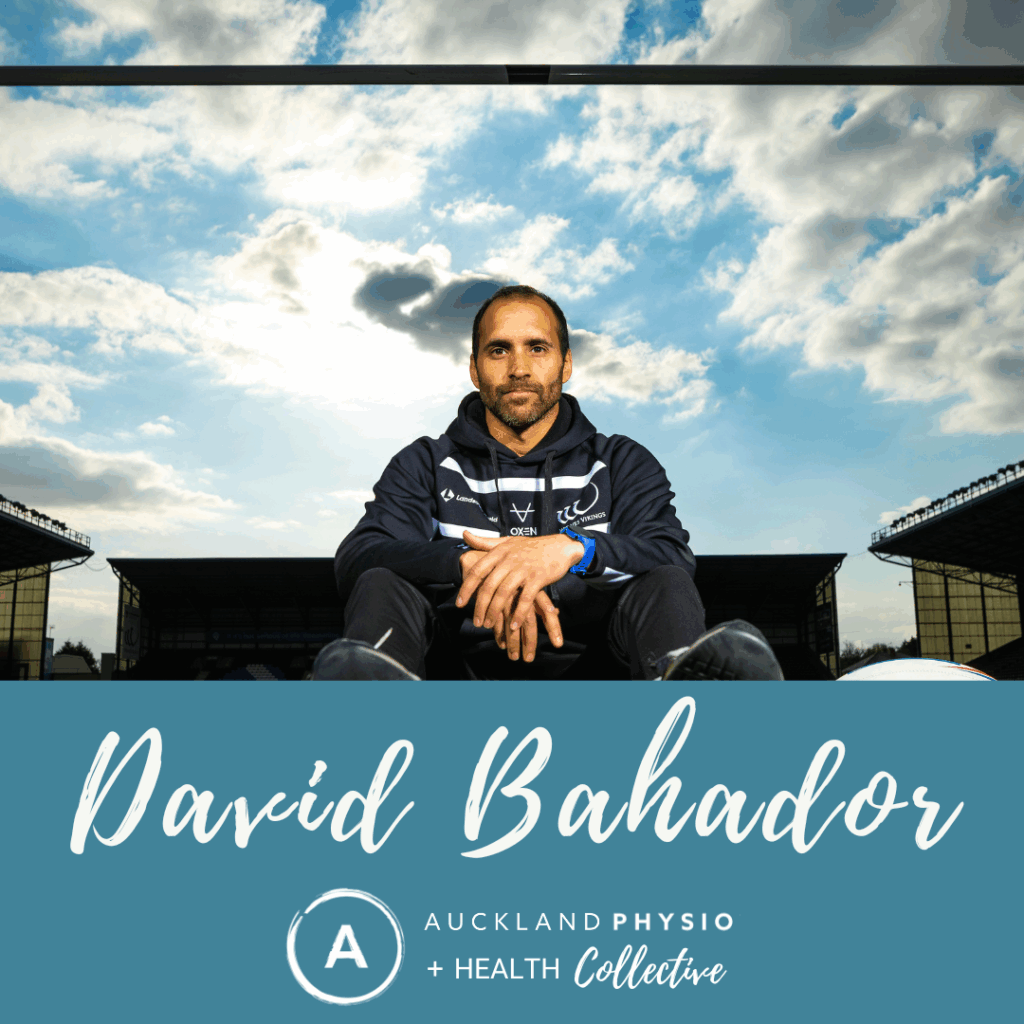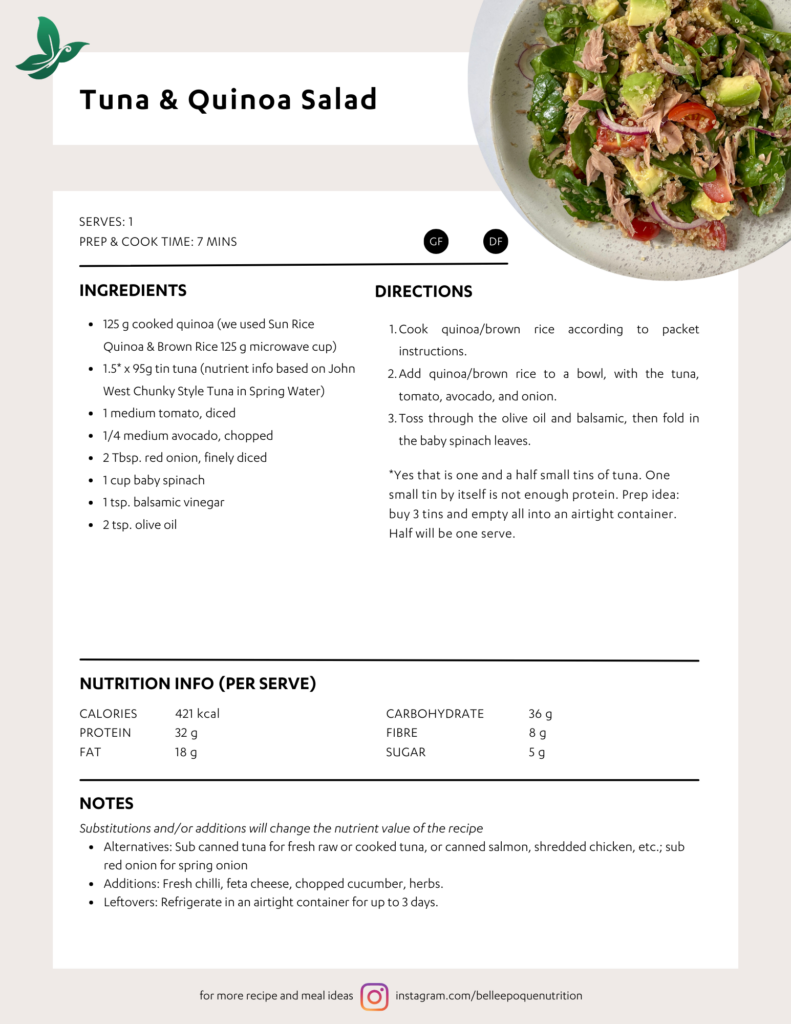If you're over 35 and playing 90-minute footy matches every weekend, listen up 
One of the most common injuries in middle-aged footballers? Calf strains.
Here’s why it happens (and how to stop it happening to you):
 Too much, too soon.
Too much, too soon.
 Not enough dynamic loading during the week.
Not enough dynamic loading during the week.
 Poor tissue tolerance to high-speed work.
Poor tissue tolerance to high-speed work.
 Thinking your 20 years old again and as fit + fast as you were back then
Thinking your 20 years old again and as fit + fast as you were back then
Let’s break it down:
You push hard on Saturday—accelerating, decelerating, sprinting, cutting—all at max intensity. But during the week? You’re flat-out with life: work, family, recovery... repeat.
So your calf (and the muscle–tendon unit around it) goes from 6 days of minimal load 1 day of max intensity. That’s a recipe for overload and injury.
 Here’s how to strengthen your calves:
Here’s how to strengthen your calves: Add 1–2 runs per week:
Add 1–2 runs per week:
 No time to run? Do this instead:
No time to run? Do this instead:
Quick 10-min calf-focused session:
 Do this 1–2x/week, and your calves will thank you.
Do this 1–2x/week, and your calves will thank you.
 Consistency > Intensity
Consistency > Intensity
You don’t need to train like a pro. But doing something mid-week helps you keep playing and avoid injury.
 Stay active. Stay strong. Stay in the game.
Stay active. Stay strong. Stay in the game.

Written by Adele Griffin, Personal Trainer and Pilates instructor
Whether you're just getting started or wanting more from your training, a well-balanced routine is the key to looking after your body and feeling your best - inside and out. The good news? It doesn’t have to be complicated. Here’s a simple weekly formula that covers all the essentials your body needs to thrive:
Strength training 2–3 times a week is one of the best things you can do for your body and mind. Think moves like squats, lunges, deadlifts, rows, and presses—these help build lean muscle, boost your metabolism, support your joints, and improve your overall shape. Plus, they help you feel strong and capable in your everyday life (hello, carrying groceries with ease!). Whether you prefer full-body sessions or like to split upper and lower body days, just aim to stay consistent and keep challenging yourself bit by bit.
Conditioning or cardio twice a week is a great way to boost your heart health, energy, and endurance. Whether it’s a brisk walk, some interval sprints, a fun dance class, or circuit training, it all counts! Cardio also helps with body composition and gives your mood a nice lift. The best part? You don’t have to go full throttle every time - try mixing high-intensity bursts with lower-impact, steady-paced sessions to keep things balanced and enjoyable.
Pilates or mobility work once or twice a week is a game-changer for your body. Just because it’s low-impact doesn’t mean it’s low on results! Pilates helps build core strength, improve posture, increase flexibility, and boost body awareness. It’s the perfect way to balance out your tougher training days, prevent injuries, and simply move better in everyday life. The bonus? It pairs so well with strength and cardio, giving your body a chance to recover and reset - while still staying active and intentional.
The real magic happens when you mix it all together—strength, cardio, and mobility. This combo gives you the best of all worlds: more energy, better sleep, a stronger body, and a boost in your mood. You’ll feel the difference, and yep, you’ll probably start to see it too! If you’re not sure where to begin, just start small with one session of each per week and build from there. Your body will thank you for it!

Acupuncture is more than just an ancient practice—it’s a modern, evidence-informed therapy embraced by physiotherapists around the world, including here at Auckland Physiotherapy. Whether you're recovering from injury, managing pain, or seeking improved function, acupuncture can play a powerful role in your rehabilitation.
Acupuncture involves the insertion of very fine, sterile needles into specific points on the body. Traditionally rooted in Chinese medicine, modern Western acupuncture—as used by physiotherapists—is based on anatomy, physiology, and scientific understanding of the nervous system, muscle function, and pain modulation.
At Auckland Physiotherapy, acupuncture is often integrated into a broader treatment plan that may also include manual therapy, exercise prescription, and patient education.
From a Western scientific perspective, acupuncture stimulates the nervous system and activates the body's natural healing processes. Here's how:
While research into acupuncture is ongoing, there is growing scientific support for its use in musculoskeletal physiotherapy. Some key findings include:
These findings support acupuncture as a complementary tool for reducing pain, improving function, and supporting recovery.
Physiotherapists are experts in human movement and rehabilitation. Acupuncture fits seamlessly into physiotherapy care when applied with clinical reasoning. At Auckland Physiotherapy, we use acupuncture to:
Our physiotherapists are certified in acupuncture and dry needling and always tailor the technique to suit your individual presentation and treatment goals.
Acupuncture is generally well-tolerated, with minimal side effects when performed by trained professionals. Most patients report a sense of relaxation during and after treatment, and for many, it significantly contributes to pain relief and recovery.
It may be especially helpful if you:
If acupuncture is recommended as part of your treatment plan, your physiotherapist will:
At Auckland Physiotherapy, we believe in holistic, patient-centered care. Acupuncture is just one of many tools we use to help you recover, move better, and feel your best.
📅 Interested in exploring acupuncture as part of your physiotherapy care?
We have two certified Physiotherapists that incorporate acupuncture as part of their Physiotherapy practice. To read more and book a spot with them, click the link below.
👉 Clodagh Quilter - Senior Physiotherapist
👉 Kirsten Rose - Masters Physiotherapist
Breathwork is one of the fastest growing modalities in the Health and Wellbeing industry. Debate over “right” and “wrong” breathing is a hot topic. This may seem a bit ridiculous as breathing is a subconscious act that we have done since birth. Our Director, Helen van Praagh discusses how it may not be just a passing fad, and offers insights as to how breathing pattern disorders can occur and what you can do about them.
What is Normal/ Optimal Breathing?
A healthy adult should have 12-18 breaths per minute at rest. The ratio of inhalation to exhalation is 1:2. Optimal breathing at rest uses the diaphragm, a dome shaped muscle at the bottom of your ribs. Your lungs do not have the ability to expand and contract on their own so instead, they change shape in response to the shape of their container. When we inhale, the diaphragm contracts and flattens down, lengthening the lung space and creating a vacuum which pulls in air. The intercostal muscles (found between the ribs) act like handles that lift the ribs up and out as you inhale, which further increases space in the chest cavity. Exhalation is a relaxed process using the elastic recoil of the chest cavity as the diaphragm and intercostal muscles release the contraction and decrease the space in the chest cavity.
What is Dysfunctional Breathing?
Instead of using the diaphragm to breathe, dysfunctional breathing uses an apical breathing pattern, which means that most of the breathing is done in the upper chest area. This pattern uses the accessory breathing muscles which include the pectorals, scalene muscles, trapezius, sternocleidomastoid and upper intercostal muscles.
Over time, these muscles shorten and the diaphragm is unable to return to it’s optimal resting position causing dynamic hyperinflation, alteration in the length-tension ratio of the muscles and pressure change, further compounding the disorder. It can also lead to trigger point development, pain and fatigue in these muscles.
What is a breathing pattern disorder?
A breathing pattern disorder is a chronic pattern of overbreathing in which the depth and rate of breath exceed the metabolic needs of the body at that time. It occurs in absence of disease and can cause seemingly unrelated symptoms. The prevalence of serious breathing pattern disorders is as high a 6-10% in the general population however, far more people are likely to have a more subtle, yet clinically significant, breathing pattern disorder. The disorders are also more prevalent in women (14%) than in men (2%).
Habitual shallow breathing causes hypocapnia, which basically means a state of reduced carbon dioxide in the blood. This occurs as C02 is eliminated too quickly, resulting in a reduction in arterial CO2 (PaCO2) levels. Once the arterial CO2 levels drop below 35mmHG, increased alkalinity in the body’s PH arises, causing respiratory alkalosis.
It has been proposed that respiratory alkalosis creates a state of sympathetic dominance, which invokes a ‘fright-flight’ response throughout the body. This leads to a heightened neuronal, physiological and psychological state, causing increased muscle tone, paraesthesia and altered rate and depth of breathing.
Acute hyperventilation is normal in times of exercise, however if this respiratory alkalosis continues, it can trigger a multisystem cascade of effects that creates a variety of seemingly unrelated or unexplained symptoms.
The mechanisms underlying disordered breathing involve physiological, psychological and biomechanical components that cannot be completely separated. Stress, anxiety, pain and trauma have all been shown to contribute to the development of a breathing pattern disorder.
What are the symptoms of a breathing pattern disorder?
Typical symptoms of a breathing disorder are;
· Frequent sighing and yawning
· Breathing discomfort*
· Disturbed sleep
· Erratic heartbeats*
· Feeling anxious and uptight
· Pins and needles feeling in the limbs
· Upset stomach/nausea
· Clammy hands
· Twitches or tremors*
· Chest Pains*
· Shattered confidence
· Tired all the time
· Achy muscles and joints
· Dizzy spells* or feeling spaced out
· Irritability or hypervigilance
· Feelings of 'air hunger'
· Reflux
* If you have these symptoms - it is advised that you seek urgent medical care.
How can I be diagnosed with a breathing pattern disorder?
Sufferers often take a long time to be diagnosed, under-go continual tests and seek aid from multiple health professionals. Diagnosis can be difficult as breathing is a complicated and dynamic process. It involves biochemical, biomechanical and psychophysiological components, of which there is not one standardised test. A thorough subjective and objective assessment is required by a trained Physiotherapist including looking at respiratory rate, breathing pattern, breath hold and the completion of the Nijmegen Questionnaire.
Treatment of a breathing pattern disorder
Management consists of removal of causative factors and rehabilitation of the habitual acquired dysfunctional breathing pattern. As with the assessment, treatment often needs to be multi-dimensional. Breathing retraining and respiratory muscle strengthening are completed by a trained Physiotherapist. Manual therapy and postural strengthening exercises may be required to improve thoracic mobility and muscle tone and length to allow the diaphragm to work optimally. Relaxation methods, mindfulness or meditation are used to reduce the associated stress and anxiety along with sleep and diet advice.
If this sounds like you, or you have been experiencing the symptoms above, we recommend you book in for a breathing assessment with Niamh Knightly, our Senior Physiotherapist and breathing expert. Click HERE to book an assessment. You can also book a complimentary 15 minute phone call with Niamh to decide if an assessment is recommended. Click HERE to book a complimentary 15 minute phone call.
We’re thrilled to announce that physiotherapist Niamh Knightly is now offering physiotherapy for Breathing Disorders as part of our musculoskeletal physiotherapy services.
Breathing is something most of us take for granted—until it becomes difficult. Whether it’s shortness of breath, tightness in the chest, dizziness, or a constant feeling of not getting enough air, disordered breathing can significantly impact your quality of life.
This new service is ideal for those who experience:
Niamh brings not only her clinical expertise, but a deep personal understanding to this work. Having experienced ongoing breathlessness herself—especially during times of stress and post-illness—she understands how frightening and frustrating it can be. It’s this personal journey that led her to train in breathing retraining methods, and why she’s so passionate about helping others feel safe and strong in their own breath again.
As part of your breathing physiotherapy assessment, Niamh will:
This is not just for people with diagnosed respiratory conditions—many people unknowingly develop inefficient breathing patterns due to stress, pain, injury, or lifestyle. You’d be surprised how much better you can feel when your breath is working with you, not against you.
Ready to breathe better, feel calmer, and reconnect with your body?
Book your breathing physiotherapy assessment HERE with Niamh today and take the first step towards a calmer, more energised you.

Senior Physiotherapist + Breathing Expert
Book your Breathing Assessment HERE
Osteoarthritis (OA) is a degenerative joint disease that commonly affects weight-bearing joints, including the foot and ankle. Characterised by cartilage breakdown, joint stiffness, pain, and swelling, OA can significantly impair mobility and quality of life. While many associate podiatrists with general foot care, they play a crucial role in managing foot and ankle osteoarthritis.
Osteoarthritis in the foot and ankle most frequently affects the big toe joint (first metatarsophalangeal joint), midfoot, and ankle joint. Common symptoms include:
Unlike other joints, the ankle is less commonly affected by OA unless there is a history of trauma or instability.
Podiatrists are healthcare professionals specialising in the diagnosis, treatment, and prevention of foot and ankle conditions. Their role in managing OA includes both non-surgical and surgical interventions.
Podiatrists conduct a thorough examination, including:
Early diagnosis helps prevent progression and tailor appropriate treatments.
Most cases of osteoarthritis are managed non-surgically, especially in the early stages. Podiatrists offer:
Education is vital. Podiatrists teach patients about joint protection techniques, weight management (which significantly impacts foot joints), and pacing activities to reduce flare-ups.
When conservative treatments fail, podiatrists may refer for to an Orthopeadic surgeon for operations, such as:
Research supports the effectiveness of podiatry interventions:
If you’re experiencing persistent foot or ankle pain, swelling, or stiffness, especially if it worsens with activity or after rest, it’s a good idea to consult a podiatrist. Early intervention can delay disease progression and improve quality of life.
Conclusion
Podiatrists are key players in the multidisciplinary management of foot and ankle osteoarthritis. Through accurate diagnosis, conservative care, and when necessary, surgical interventions, they help reduce pain, improve mobility, and enhance daily functioning. If you or someone you know is struggling with foot or ankle OA, seeking podiatry care could be a step in the right direction.
Contact Us Today
If you’re experiencing any of the issues discussed above or simply want to learn more about how Podiatry can help improve your quality of life, contact our our clinic (close to Remuera, Newmarket and Parnell) today to schedule a consultation or book in for a first appointment online. Our expert Podiatrist, Aaron Jackson is ready to support your journey to better health and well-being.

Your pelvic floor might not be something you think about often—but it plays a crucial role in your overall health and quality of life. From bladder control to sexual function and even posture, this group of muscles does far more than many realize. Whether you’re recovering from childbirth, aging, or simply looking to improve core strength, understanding and strengthening your pelvic floor can have lasting benefits.
The pelvic floor is a group of muscles and connective tissues that stretch like a hammock from your pubic bone to your tailbone. These muscles support your bladder, bowel, and (for women) the uterus. They also help control urination, bowel movements, and sexual function.
When these muscles are weak or dysfunctional, it can lead to common issues such as:
Several factors can weaken the pelvic floor, including:
You may have a weak pelvic floor if you notice:
Kegel exercises involve tightening and holding the pelvic muscles as if you’re trying to stop the flow of urine. Research consistently shows that regular Kegels improve symptoms of urinary incontinence and pelvic organ prolapse. Research also shows that they are more successful when completed under the management of a Physio and can take up to 13 weeks to see results.
How to do Kegels:
Evidence: A 2018 review in the Cochrane Database found that pelvic floor muscle training significantly improves symptoms of stress and urge incontinence.
If you’re unsure whether you're doing Kegels correctly, pelvic floor physiotherapy can help. Therapists use biofeedback and guided exercises tailored to your needs.
Evidence: A 2020 study in the International Urogynecology Journal showed that physical therapy, including biofeedback, leads to significant improvements in pelvic floor function.
Pilates emphasizes controlled movement and core stability, which often includes the pelvic floor. Some Pilates exercises can naturally engage and strengthen these muscles. If you have pelvic floor issues, we suggest seeing a Pelvic Health Physio before you start to ensure you correctly engage your muscles as doing them wrong can ofetn worsen symptoms.
Evidence: Studies, such as one in Physiotherapy Theory and Practice (2015), have shown that Pilates improves pelvic floor muscle strength and reduces urinary incontinence.
Excess weight increases pressure on your pelvic floor, making it harder for the muscles to function well. A healthy diet and regular exercise can reduce this strain.
Evidence: A study in Obstetrics & Gynecology (2005) found that even a modest weight loss of 5-10% can significantly reduce urinary leakage.
Chronic straining from constipation weakens the pelvic muscles. Eat a fiber-rich diet (25–35 grams/day), stay hydrated, and be active to keep bowel movements regular.
Avoid going "just in case" too frequently, and don’t rush urination. Over time, poor bladder habits can affect pelvic muscle function.
If you’ve tried exercises but still experience symptoms like frequent leakage, pelvic pain, or a bulging/ dragging sensation, consult a pelvic health physiotherapist. Early intervention can prevent more serious problems.
Your pelvic floor health is essential, and taking steps to strengthen it is an investment in your well-being. With regular practice of evidence-based exercises like Kegels, attention to posture, and healthy lifestyle habits, you can prevent or manage many common pelvic floor issues.
Start today—a few minutes a day can lead to big improvements in your quality of life.

Cluster headaches are a severe and debilitating form of headache that occur in cyclical patterns, often causing intense pain around one eye or one side of the head. Physiotherapy can play a significant role in managing cluster headache by addressing musculoskeletal issues, improving circulation, and reducing stress-related triggers. With our Headache Treatment Approach, patients report a reduction in intensity and frequency of their headache with many no longer requiring medication to manage their symptoms.
Our Headache Treatment Approach
1. Manual Therapy and Soft Tissue Techniques
Manual therapy to address any upper neck joint dysfunction, and alleviate muscle tension in the neck, shoulders, and upper back can be very helpful in alleviating the intensity and frequency of cluster headache. Techniques such as myofascial release, trigger point therapy, and cervical mobilization can help reduce muscular tightness and nerve irritation that might contribute to headache frequency or severity.
2. Postural Correction and Ergonomics
Poor posture, especially forward head posture and rounded shoulders, can increase the strain on the neck and upper back, potentially aggravating headaches. Our physiotherapists can assess postural imbalances and provide exercises to improve alignment, reducing unnecessary strain on the cervical spine. Ergonomic recommendations, such as adjusting desk height and screen position, can further help prevent exacerbations.
3. Stretching and Strengthening Exercises
Stretching tight muscles in the neck and shoulders, combined with strengthening exercises for the deep neck flexors and scapular stabilizers, can help prevent tension buildup. Strengthening exercises also improve spinal stability, reducing the likelihood of nerve compression or irritation that could contribute to cluster headaches.
4. Breathing and Relaxation Techniques
Stress is a known trigger for cluster headaches. Physiotherapy includes relaxation techniques such as diaphragmatic breathing, mindfulness-based exercises, and biofeedback to help manage stress and autonomic dysfunction.
Physiotherapy, and particularly our comprehensive Headache Treatment Approach, is effective treatment for cluster headaches. Book your assessment today!
Our Master Physiotherapist, Robyn Atkinson, is trained in the Watson HeadacheⓇ Approach and leads our Headache Clinic at Auckland Physiotherapy.
Book your initial headache assessment here.
Read more on headache treatment here.
Endometriosis is a chronic condition in which tissue similar to the lining of the uterus (endometrium) grows outside of the uterus, leading to pain, inflammation, and often infertility. It affects approximately 1 in 10 women of reproductive age, causing debilitating symptoms, including chronic pelvic pain, painful menstruation, and sometimes urinary or bowel issues. Though medical treatments such as hormonal therapy and surgery are commonly used, pelvic health physiotherapy is becoming a vital part of endometriosis management, offering relief from pain, improving pelvic floor function, and enhancing quality of life.
In this blog, we’ll explore how pelvic health physiotherapists can help individuals with endometriosis, supported by evidence and research.
What is Pelvic Health Physiotherapy?
Pelvic health physiotherapy is a specialized branch of physiotherapy that focuses on addressing issues related to the pelvic floor muscles and the surrounding structures. The pelvic floor muscles support the pelvic organs (bladder, uterus, rectum) and are involved in various functions, such as bladder and bowel control, sexual function, and stability. Pelvic health physiotherapists are trained to treat a range of pelvic floor disorders using a combination of manual therapy, specific exercises, posture training, and education.
For individuals with endometriosis, pelvic health physiotherapists can provide tailored interventions to improve pelvic muscle function, relieve pain, and address other complications such as incontinence, constipation, and painful intercourse.
How Pelvic Health Physiotherapists Can Help with Endometriosis
While pelvic health physiotherapists cannot cure endometriosis, they can significantly improve symptoms and quality of life through targeted treatments. Below, we explore how pelvic health physiotherapy can assist with the management of endometriosis:
Pain is one of the most common and debilitating symptoms of endometriosis, affecting many aspects of daily life. Pelvic health physiotherapists are trained to help alleviate this pain using a variety of techniques.
Endometriosis often leads to pelvic floor dysfunction, which can result in symptoms such as incontinence, constipation, or painful intercourse. Pelvic health physiotherapists specialize in assessing and treating pelvic floor dysfunction.
Many people with endometriosis require surgery to remove lesions or cysts, leading to the formation of scar tissue (adhesions) in the pelvic area. Scar tissue can restrict movement and contribute to chronic pain. Pelvic health physiotherapists can help manage scar tissue through:
Endometriosis can often affect the bowel and bladder, leading to symptoms such as constipation, diarrhea, urinary urgency, or frequency. Pelvic health physiotherapists have specialized knowledge in addressing these issues by:
Endometriosis often involves a complex array of symptoms that can be difficult to manage, and each patient may experience a different set of challenges. Pelvic health physiotherapists not only provide treatment but also serve as educators, offering valuable advice on how to manage daily activities and make lifestyle changes that can support pelvic health.
Living with endometriosis can take a mental and emotional toll, leading to stress, anxiety, and depression. Pelvic health physiotherapists often work in conjunction with mental health professionals to offer a holistic approach to care.
Painful intercourse (dyspareunia) is a common symptom of endometriosis, and pelvic health physiotherapists are trained to address this issue by:
Pelvic health physiotherapists play a crucial role in the management of endometriosis. By offering a range of treatments and interventions designed to alleviate pain, improve pelvic floor function, manage scar tissue, and support emotional health, PHPTs can significantly enhance the quality of life for individuals living with this chronic condition. Collaborative care between gynecologists, physiotherapists, and other healthcare providers is essential for creating a comprehensive treatment plan that addresses both the physical and emotional aspects of endometriosis.
If you're struggling with endometriosis, seeking the help of a pelvic health physiotherapist could be an important step in your healing journey. Whether it's through pain management, pelvic floor therapy, or education, these specialists are dedicated to providing relief and support for individuals living with this challenging condition. Book online a first appointment or call our friendly reception team on 09 3664480.


Check out our Online Store for great Rehab and Health goods.

